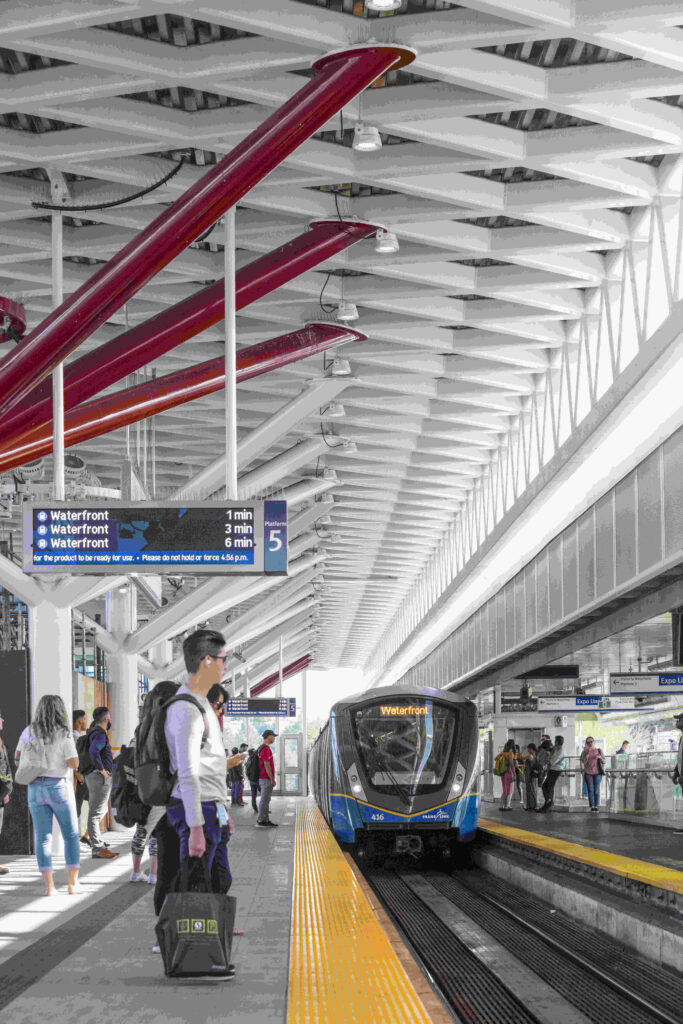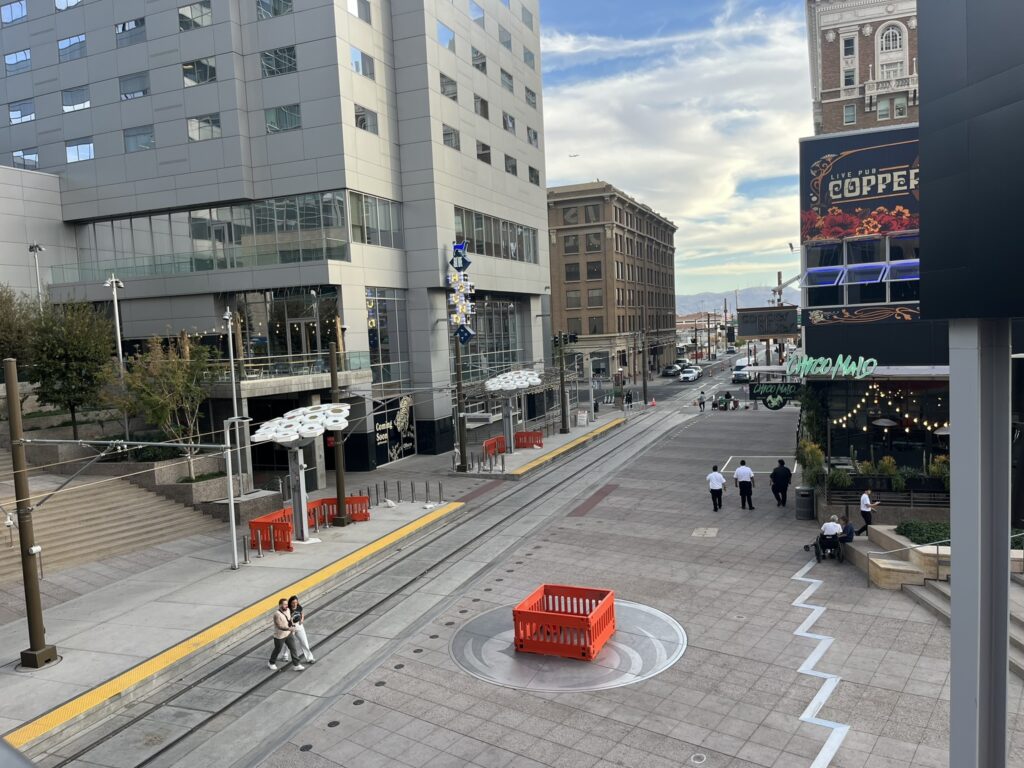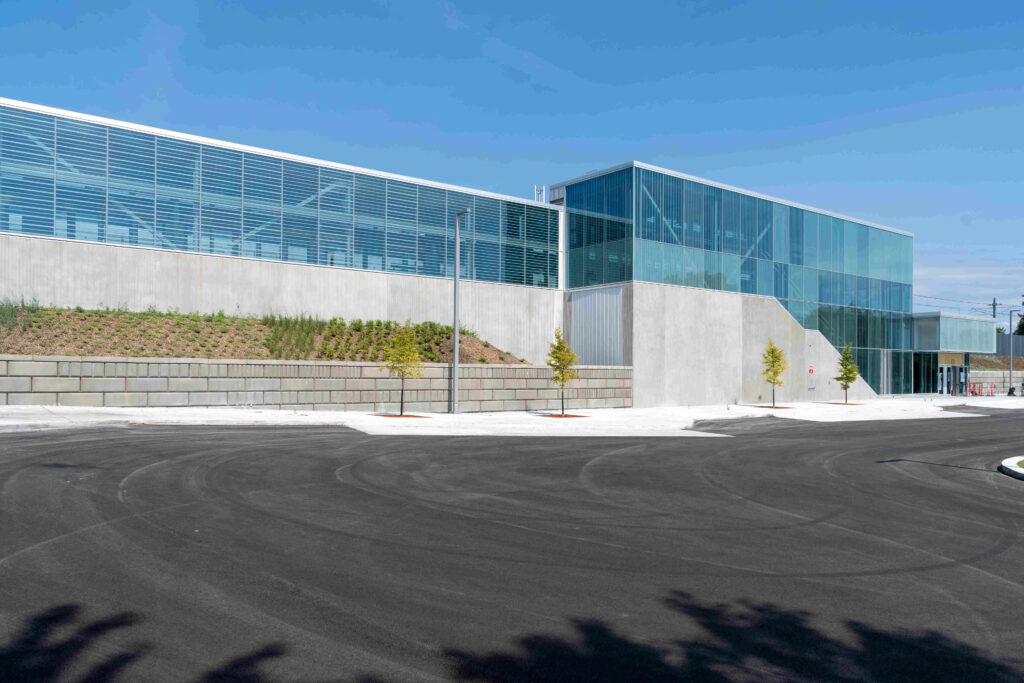Future-ready light rail stations, by design
Connectivity, accessibility and scalability define innovations in visionary light rail transit (LRT) station design. The very best transit stations prioritize convenience and ease of use while artfully balancing comfort, operational efficiency, cost-effectiveness and safety. Here we highlight how forward-thinking design values empower us to elevate LRT stations as functional, accessible and future-ready facilities.
Seamless urban integration. Vancouver’s Commercial-Broadway Station on the SkyTrain system exemplifies cutting-edge integration with the transit system and public realm. As a major interchange connecting SkyTrain’s Expo and Millennium lines with city bus routes, pedestrian pathways and cycling infrastructure, this station forms a vital multimodal transit hub in the city’s transit network. Originally designed as two separate passenger facilities, the Broadway Station opened in 1986 and Commercial Station in 2002. The 2019 unification and expansion project, delivered by our design and construction teams, brought together the two transit lines with efficient connections to buses, forming one highly cohesive, intuitive multimodal hub in the city.
Harmonizing the two distinct building structures posed significant design challenges. Our approach employed a modular, structural mesh canopy that unified the stations visually and functionally. This canopy complemented the Broadway Station’s iconic hoop trusses and provided much needed shelter from Vancouver’s frequent rain while enhancing passenger wayfinding through the inspiring architecture.
Accessibility was another central focus. New pedestrian overpasses, escalators, elevators and signage simplified transfers and reduced congestion. The station features doors that open on both sides of the train, a unique feature of TransLink’s network that improves passenger flow and minimizes boarding delays. We designed the station to accommodate over 50,000 daily travelers — more than Vancouver International Airport — with additional capacity for future network extensions and ridership growth. All features were implemented while maintaining full accessibility and operability at the two stations.

Passenger-centric amenities. In Phoenix, Arizona, the 5.5-mile South Central Light Rail Extension highlights the critical importance of well-designed passenger amenities to enhance the transit experience. Valley Metro adopted an open-station design with features such as shade structures, water fountains and ample seating to create a comfortable and inviting environment. Custom artwork by local artists reflects the identity of the surrounding communities and transforms each station into a unique and welcoming space that encourages repeat ridership.
AECOM played a pivotal role in the development of the Downtown Hub East Station at CityScape, a standout feature of the South Central Light Rail extension. This station transformed Central Avenue into a pedestrian-friendly transit hub and introduced innovative design solutions that improve passenger flow through the urban environment. A customized side platform design with three sections allows mid-platform crossings, making it easier for riders to access nearby shops and restaurants when a train is not occupying the station. A specially engineered curved platform ensures compliance with accessibility standards by minimizing the gap between train doors and platforms. In lieu of ramps, we used ADA-compliant slopes to ease the transition from sidewalks to platforms. In-pavement lights that flash when a train approaches the station offer additional safety enhancement. All of these factors helped the station integrate seamlessly with the surrounding urban environment.

Scalability. The modular approach to designing the Réseau Express Métropolitain (REM) in Montreal sets a new benchmark for light rail transit stations. Once completely in service, REM will stretch 42.5 miles (67 kilometers) and encompass 26 stations including at-grade, underground and above-ground facilities. The station design, conceived by a consortium of Lemay, Bisson Fortin and Perkins&Will architects, prioritized efficiency, sustainability and passenger experience while promoting a cohesive architectural identity across the system.
The project was advanced as part of a public-private partnership, delivering standardized station components to streamline construction and minimize cost. Because the facility structure is modular, each station could be carefully tailored to its unique location. For example, urban stations were calibrated spatially and functionally to meet the needs of their densely populated neighborhoods. This approach allowed the stations to address specific site requirements while adhering to the overall unified design aesthetic.
Sustainability and durability were also priorities. The station designs incorporate snow and ice management systems such as heated floors to better manage accessibility throughout the harsh Montreal winter. The design included LED lighting adjusted by automated sensors — and at some stations, solar panels — to help reduce reliance on the energy grid. The clean, minimalist design allows for future network expansions and ridership growth, enabling the addition of new stations without compromising visual or functional consistency.

Future forward. Innovative stations are delivered by design. Beyond solving technical challenges, exceptional designers bring art and science to elevate the passenger experience and urban integration. As seen through exemplar new projects — such as Vancouver’s Commercial-Broadway Station, Phoenix’s South Central Extension and Montreal’s REM — the visionary light rail transit stations of tomorrow serve the public with architectural and engineering excellence that complements the offer of great urban mobility.






